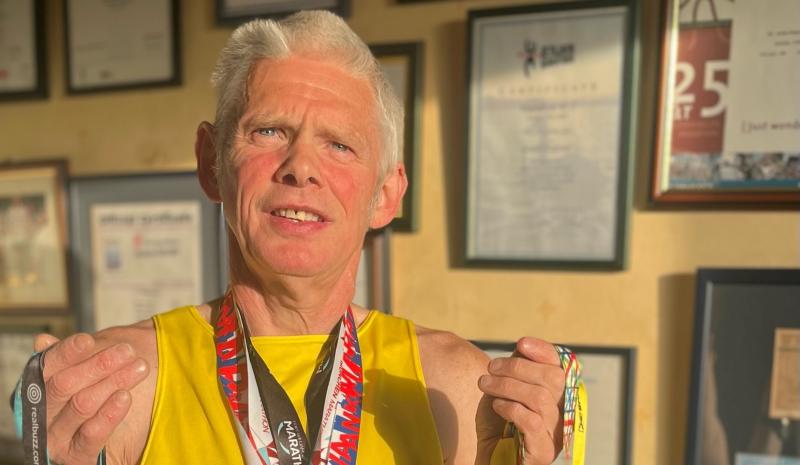News
A&E overcrowding at maximum despite extra beds

The Emergency Department at Galway University Hospital has been on Code Red or Black – the highest status in its new escalation policy – continuously for five weeks due to overcrowding.
On Tuesday, there were 36 people waiting on trolleys when the hospital issued a warning about excessive delays, urging people to stay away unless “in the case of real emergencies”. That was down to 32 by Wednesday morning and up from 25 on Monday.
The unrelenting pressure on the ED continues despite the opening of 17 new beds last month to accommodate more patients, with a further thirteen due to come on stream before the end of this month on the site of the old Physiotherapy and Social Work Department.
However the extra capacity has done very little to alleviate the lengthy waiting times for patients, insisted Clare Treacy, Irish Nurses and Midwives Organisation (INMO) industrial relations officer for the Galway region.
And it follows a national agreement with the INMO to implement an escalation process when 30% of patients are waiting more than nine hours on a trolley in the ED, which sets out specific steps to be followed to try and speed up the flow of patients. These include cancelling elective patients, arranging more step down beds in the community, organising transport for the discharge of patients and rushing diagnostic tests.
The hospital said it was procuring convalescence beds “on a daily basis” from private nursing homes and working closely with all the hospitals in the Saolta group to ensure that capacity on all sites is maximised.
“We’ve been meeting with management at UHG every week since just before Christmas and they’ve been in full escalation – either Code Red or Code Black – since January 6, apart from the one or two days that they have dropped back to Code Orange or Green,” Clare stated.
“There’s no escalation policy going to deescalate the situation in Galway in my view – only building a new Emergency Department and adequately staffing it.”
Yesterday management brought in private ambulances to move patients fit for discharge. However a promise to hire more staff has stalled as nurses spurn the chronic conditions at UHG for the less stressful atmosphere and better pay of private hospitals.
“I believe local managers are doing as good as they can do – they are having meetings, they are trying to improve the flow of patients through the hospital but there just aren’t enough beds, the ED is still small and way understaffed,” stressed Clare.
Ten ED nurses left the unit last year.
Health Minister Leo Varadkar stated that the new ED will go to design and planning stage after a cost benefit analysis is done by the end of March on a revised proposal submitted by the hospital management after their original plan was deemed overly ambitious. A further 75 beds are expected to open by the end of the year after various departments have been moved and other units built in a complex game of infrastructural chess on the highly developed Newcastle site.
In the meantime, planned surgeries are continuing to be postponed.
Almost 7,000 surgeries were cancelled at Galway’s two public hospitals in the past two years – that’s on average nine elective surgeries at UHG and Merlin Park every day of 2014 and 2015. Saolta, the group which runs Galway’s three public hospitals, was fined over a million euro for failing to adequately clear lengthy waiting lists across all disciplines for the final five months of last year.
However the practice of imposing fines is due to be reviewed for this year.
Connacht Tribune
West has lower cancer survival rates than rest

Significant state investment is required to address ‘shocking’ inequalities that leave cancer patients in the West at greater risk of succumbing to the disease.
A meeting of Regional Health Forum West heard that survival rates for breast, lung and colorectal cancers than the national average, and with the most deprived quintile of the population, the West’s residents faced poorer outcomes from a cancer diagnosis.
For breast cancer patients, the five-year survival rate was 80% in the West versus 85% nationally; for lung cancer patients it was 16.7% in the west against a 19.5% national survival rate; and in the West’s colorectal cancer patients, there was a 62.6% survival rate where the national average was 63.1%.
These startling statistics were provided in answer to a question from Ballinasloe-based Cllr Evelyn Parsons (Ind) who said it was yet another reminder that cancer treatment infrastructure in the West was in dire need of improvement.
“The situation is pretty stark. In the Western Regional Health Forum area, we have the highest incidence of deprivation and the highest health inequalities because of that – we have the highest incidences of cancer nationally because of that,” said Cllr Parsons, who is also a general practitioner.
In details provided by CEO of Saolta Health Care Group, which operates Galway’s hospitals, it was stated that a number of factors were impacting on patient outcomes.
Get the full story in this week’s Connacht Tribune, on sale in shops now, or you can download the digital edition from www.connachttribune.ie. You can also download our Connacht Tribune App from Apple’s App Store or get the Android Version from Google Play.
Connacht Tribune
Marathon Man plans to call a halt – but not before he hits 160 races

On the eve of completing his 150th marathon, an odyssey that has taken him across 53 countries, Loughrea’s Marathon Man has announced that he is planning to hang up his running shoes.
But not before Jarlath Fitzgerald completes another ten races, making it 160 marathons on the occasion of his 60th birthday.
“I want to draw the line in 2026. I turn 57 in October and when I reach 60 it’s the finishing line. The longer races are taking it out of me. I did 20 miles there two weeks ago and didn’t feel good. It’s getting harder,” he reveals.
“I’ve arthritis in both hips and there’s wear and tear in the knees.”
We speak as he is about to head out for a run before his shift in Supervalu Loughrea. Despite his physical complaints, he still clocks up 30 miles every second week and generally runs four days a week.
Jarlath receives injections to his left hip to keep the pain at bay while running on the road.
To give his joints a break, during the winter he runs cross country and often does a five-mile trek around Kylebrack Wood.
He is planning on running his 150th marathon in Cork on June 4, where a group of 20 made up of work colleagues, friends and running mates from Loughrea Athletics Club will join him.
Some are doing the 10k, others are doing the half marathon, but all will be there on the finishing line to cheer him on in the phenomenal achievement.
Get the full story in this week’s Connacht Tribune, on sale in shops now, or you can download the digital edition from www.connachttribune.ie. You can also download our Connacht Tribune App from Apple’s App Store or get the Android Version from Google Play.
CITY TRIBUNE
Galway ‘masterplan’ needed to tackle housing and transport crises

From the Galway City Tribune – An impassioned plea for a ‘masterplan’ that would guide Galway City into the future has been made in the Dáil. Galway West TD Catherine Connolly stated this week that there needed to be an all-inclusive approach with “vision and leadership” in order to build a sustainable city.
Deputy Connolly spoke at length at the crisis surrounding traffic and housing in Galway city and said that not all of the blame could be laid at the door of the local authority.
She said that her preference would be the provision of light rail as the main form of public transport, but that this would have to be driven by the government.
“I sat on the local council for 17 years and despaired at all of the solutions going down one road, metaphorically and literally. In 2005 we put Park & Ride into the development plan, but that has not been rolled out. A 2016 transport strategy was outdated at the time and still has not been updated.
“Due to the housing crisis in the city, a task force was set up in 2019. Not a single report or analysis has been published on the cause of the crisis,” added Deputy Connolly.
She then referred to a report from the Land Development Agency (LDA) that identified lands suitable for the provision of housing. But she said that two-thirds of these had significant problems and a large portion was in Merlin Park University Hospital which, she said, would never have housing built on it.
In response, Minister Simon Harris spoke of the continuing job investment in the city and also in higher education, which is his portfolio.
But turning his attention to traffic congestion, he accepted that there were “real issues” when it came to transport, mobility and accessibility around Galway.
“We share the view that we need a Park & Ride facility and I understand there are also Bus Connects plans.
“I also suggest that the City Council reflect on her comments. I am proud to be in a Government that is providing unparalleled levels of investment to local authorities and unparalleled opportunities for local authorities to draw down,” he said.
Then Minister Harris referred to the controversial Galway City Outer Ring Road which he said was “struck down by An Bord Pleanála”, despite a lot of energy having been put into that project.
However, Deputy Connolly picked up on this and pointed out that An Bord Pleanála did not say ‘No’ to the ring road.
“The High Court said ‘No’ to the ring road because An Bord Pleanála acknowledged it failed utterly to consider climate change and our climate change obligations.
“That tells us something about An Bord Pleanála and the management that submitted such a plan.”
In the end, Minister Harris agreed that there needed to be a masterplan for Galway City.
“I suggest it is for the local authority to come up with a vision and then work with the Government to try to fund and implement that.”












